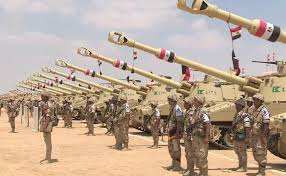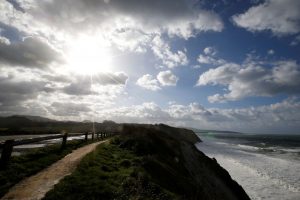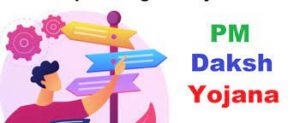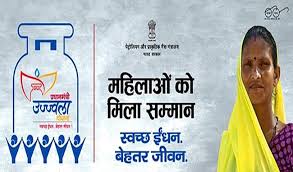Today Current Affairs: 10th August 2021 for UPSC IAS exams, State PSC exams, SSC CGL, State SSC, RRB, Railways, Banking Exam & IBPS, etc
Table of Contents
Open Debate On ‘Enhancing Maritime Security:
Prime Minister Narendra Modi will chair the High-level Open Debate on ‘Enhancing Maritime Security – A Case for International Cooperation’ on 9th August via video conferencing.
- Narendra Modi, would be the first Indian Prime Minister to preside over a UN Security Council Open Debate.
- The Open Debate will focus on ways to effectively counter maritime crime and insecurity and strengthened coordination in the maritime domain.
- Prime Minister Shri Narendra Modi put forward the vision of SAGAR – an acronym for ‘Security and Growth for all in the Region’ in 2015.
- In 2019, at the East Asia Summit, this initiative was further elaborated through the Indo-Pacific Oceans’ Initiative (IPOI) with a focus on seven pillars of maritime security including
- Maritime Ecology;
- Maritime Resources;
- Capacity Building and Resource Sharing;
- Disaster Risk Reduction and Management;
- Science, Technology and Academic Cooperation; and
- Trade Connectivity and
- Maritime Transport.
Defence Exports

Over the years various reforms have been taken to enhance Defence exports. These reforms have ramped the defence exports to new heights.
- As per the details provided by the government in the Lok Sabha recently, India exported military hardware and systems worth Rs 38,500 crore in the last seven years.
- Further, the value of defence exports clocked Rs 9,115.55 crore in 2019-20 and Rs 8434.84 crore in 2020-21.
- The major arsenal exported during 2014-15 and 2020-21 included armoured protection vehicles, light-weight torpedo, weapons locating radar,fire control systems and tear gas launchers.
- Presently, India is exporting defence equipment to more than 75 countries around the globe.
- In the last seven years, the aggregate defence exports stood at Rs 38,500.25 crore.
Indo-Tibetan Border Police (ITBP) Force:

ITBP has commissioned its first two women officers (Prakriti and Deeksha) in combat recently.
- The ITBP started recruiting women combat officers in its cadre from 2016 through an all-India examination conducted by the Union Public Service Commission (UPSC).
- Before this, it had combat women only in the constabulary ranks.
- Indo-Tibetan Border Police Force (ITBPF) is a Central Armed Police Force functioning under the Ministry of Home Affairs, Government of India.
- It is India’s primary border patrol organization for its border with China’s Tibet Autonomous Region.
Constituting instrument: Indo-Tibetan Border Police Force Act, 1992.
Hydrogen Fuel:

Under ‘Mission Net Zero Carbon Emission Railway’ by 2030, Indian Railways are set to run trains on hydrogen fuel-based technology. For this, it is considering retrofitting of existing trains.
- Hydrogen is the lightest and first element on the periodic table. Since the weight of hydrogen is less than air, it rises in the atmosphere and is therefore rarely found in its pure form, H2.
- At standard temperature and pressure, hydrogen is a nontoxic, nonmetallic, odorless, tasteless, colorless, and highly combustible diatomic gas.
- Hydrogen fuel is a zero-emission fuel burned with oxygen. It can be used in fuel cells or internal combustion engines. It is also used as a fuel for spacecraft propulsion.
- Hydrogen is the most abundant element in the universe. The sun and other stars are composed largely of hydrogen.
- Astronomers estimate that 90% of the atoms in the universe are hydrogen atoms. Hydrogen is a component of more compounds than any other element.
- Water is the most abundant compound of hydrogen found on earth.
- Molecular hydrogen is not available on Earth in convenient natural reservoirs. Most hydrogen on Earth is bonded to oxygen in water and to carbon in live or dead and/or fossilized biomass.
- It can be created by splitting water into hydrogen and oxygen.
- Hydrogen can be stored physically as either a gas or a liquid.
- Storage of hydrogen as a gas typically requires high-pressure tanks.
- Storage of hydrogen as a liquid requires cryogenic temperatures because the boiling point of hydrogen at one atmosphere pressure is −252.8°C.
- Hydrogen can also be stored on the surfaces of solids (by adsorption) or within solids (by absorption).
- Recently, the Finance Minister in the Union budget for 2020-21 formally announced the National Hydrogen Mission which aims for generation of hydrogen from green power resources.
- The Ministry of New and Renewable Energy (MNRE) has also disclosed that the draft regulations for NHM will be finalised by the end of this month and will thereafter proceed for approval of the Union Cabinet.
Atlantic Ocean’s Current System(AMOC):

According to a recent study, the Atlantic Ocean’s current system-AMOC, an engine of the Northern Hemisphere’s climate, could be weakening to such an extent that it could soon bring big changes to the world’s weather.
- Climate models have shown that the AMOC is at its weakest in more than a 1,000 years.
- However, it has not been known whether the weakening is due to a change in circulation or it is to do with the loss of stability.
- The Atlantic Meridional Overturning Circulation (AMOC) is a large system of ocean currents that carry warm water from the tropics northwards into the North Atlantic.
- The AMOC is a large system of ocean currents, like a conveyor belt, driven by differences in temperature and salt content – the water’s density.
- As warm water flows northwards it cools and some evaporation occurs, which increases the amount of salt.
- Low temperature and a high salt content make the water denser, and this dense water sinks deep into the ocean.
- The cold, dense water slowly spreads southwards, several kilometres below the surface.
- Eventually, it gets pulled back to the surface and warms in a process called “upwelling” and the circulation is complete.
- If the AMOC collapsed, it would increase cooling of the Northern Hemisphere, sea level rise in the Atlantic, an overall fall in precipitation over Europe and North America and a shift in monsoons in South America and Africa.
PM-DAKSH Portal And App:

The government has launched ‘PM-DAKSH’ portal and app to make the skill development schemes accessible to the target groups of Backward Classes, Scheduled Castes and Safai Karamcharis.
- The scheme is being implemented by the Ministry of Social Justice and Empowerment from the year 2020-21.
- Under the scheme, eligible target groups are being provided skill development training programmes on up-skilling/reskilling, short term training programme, long term training programme and entrepreneurship development program (EDP).
- Eligibility: Marginalized persons of SC, OBC, Economically Backward Classes, De-notified tribes, Sanitation workers including waste pickers, manual scavengers, transgenders and other similar categories.
Significance and the need for the scheme:
- Most of the persons of target group are having minimal economic assets; therefore, provision of training and enhancing their competencies is essential for economic empowerment/ upliftment of these marginalized target groups.
- Many of the persons of target group belong to the category of rural artisans who have become marginalized owing to coming of better technologies in market.
- There is also a need to empower the women amongst the target group, who, due to their overall domestic compulsions, cannot be involved in wage employment which normally involves long working hours and sometimes migration to other cities.
The UN Has Condemned Underage Forced Marriages In Zimbabwe:

The UN has condemned underage forced marriages in Zimbabwe following the death of a 14-year-old girl reportedly during childbirth.
- The death has sparked widespread anger on social media and among children’s rights activists.
Cases of child marriages in Zimbabwe:
- Cases of violence perpetrated against women and girls in Zimbabwe, “including marriages of minors” are a matter of concern.
- Official statistics show that one in three Zimbabwean girls are married off before the age of 18.
Child marriages across the world:
- The total number of girls married in childhood stands at 12 million per year.
- Across the globe, levels of child marriage are highest in sub-Saharan Africa, where 35 per cent of young women were married before age 18, followed by South Asia, where nearly 30 per cent were married before age 18.
- Lower levels of child marriage are found in Latin America and Caribbean, the Middle East and North Africa, and Eastern Europe and Central Asia.
UN and other international efforts towards ending child marriages:
- 1979 Convention on the Elimination of Discrimination Against Women provides that the betrothal and marriage of a child shall have no legal effect.
- The 1964 Convention on Consent to Marriage, Minimum Age for Marriage and Registration of Marriages says that States Parties to the present Convention shall take legislative action to specify a minimum age for marriage.
- The right to ‘free and full’ consent to marriage is recognized in the Universal Declaration of Human Rights.
- Although marriage is not mentioned directly in the Convention on the Rights of the Child, child marriage is linked to other rights – such as the right to freedom of expression, the right to protection from all forms of abuse, and the right to be protected from harmful traditional practices.
- In 2016, UNICEF, together with UNFPA, launched the Global Programme to End Child Marriage.
- The elimination of child, early and forced marriage is now part of the Sustainable Development Goals under Target 5 – achieving gender equality and empowering all women and girls.
Laws to prevent child marriages in India:
- The Child Marriage Restraint Act of 1929 to restrict the practice of child marriage.
- The Prohibition of Child Marriage Act, 2006 to address and fix the shortcomings of the Child Marriage Restraint Act.
ISRO Is Set To Launch A Bhutanese Satellite:

Indian Space Research Organization (ISRO) is set to launch a Bhutanese satellite in December this year.
- The development of the INS-2B satellite of Bhutan is being underway by four Bhutanese engineers who were trained at ISRO’s UR Rao Satellite Centre in Bengaluru from December 28 to February 25, 2021.
- India and Bhutan have been engaged in space cooperation with a ground Earth station for South Asia Satellite (SAS) that was inaugurated in Thimphu, Bhutan during Prime Minister Narendra Modi’s visit in August 2019.
- The SAS was launched by India in 2017 as a gift to the countries in the South Asia region, including Bhutan. Under the project, New Delhi has offered increased bandwidth on an additional transponder on the satellite for Bhutan as a gift as per the country’s requirement.
Ujjwala 2.0 (Pradhan Mantri Ujjwala Yojana – PMUY):

Prime Minister Narendra Modi will launch Ujjwala 2.0 (Pradhan Mantri Ujjwala Yojana – PMUY) by handing over LPG connections, at Mahoba Uttar Pradesh on 10th August, 2021.
Ujjwala 1.0:
- During Ujjwala 1.0 launched in 2016, a target was set to provide LPG connections to 5 crore women members of BPL households.
- Subsequently, the scheme was expanded in April 2018 to include women beneficiaries from seven more categories (SC/ST, PMAY, AAY, Most backward classes, tea garden, forest dwellers, Islands).
- Also, the target was revised to 8 Crore LPG connections. This target was achieved in August 2019, seven months ahead of the target date.
Ujjwala 2.0:
- In the Union budget for FY 21-22, provision for an additional one crore LPG connection under the PMUY scheme was announced.
- These one crore additional PMUY connections (under Ujjwala 2.0) aim to provide deposit-free LPG connections to those low-income families who could not be covered under the earlier phase of PMUY.
- Along with a deposit free LPG connection, Ujjwala 2.0 will provide first refill and hotplate free of cost to the beneficiaries. Also, the enrollment procedure will require minimum paperwork.
- In Ujjwala 2.0, migrants will not be required to submit ration cards or address proof. A self-declaration for both ‘family declaration’ and as a ‘proof of address’ will suffice.
- Ujjwala 2.0 will help achieve the Prime Minister’s vision of universal access to LPG.




